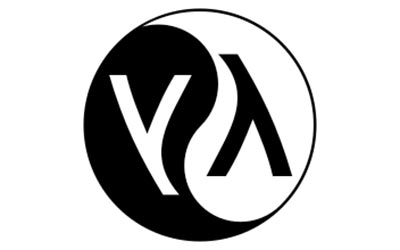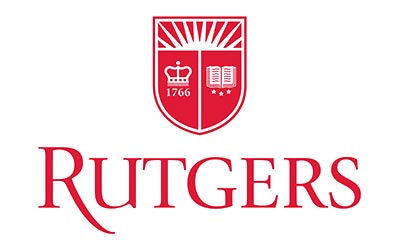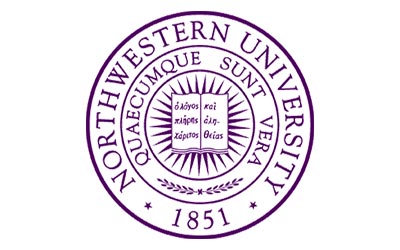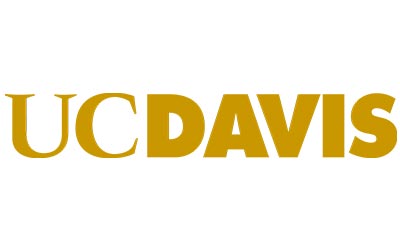











1. Malekos Smith, Z. and Lostri, E. (2020). The Hidden Cost of Cybercrime. McAffee, pp.5-33.
Source Available here.
2. National Security Commission on Artificial Intelligence. (2021). Final Report.
Source Available here.
3. Office of National Intelligence (ODNI). (2021). Foreign Threats to the 2020 US Federal Elections, Declassified. Washington, D.C.
Source Available here.
4. Federal Trade Commission. (2020, December 14). FTC Issues Orders to Nine Social Media and Video Streaming Services Seeking Data About How They Collect, Use, and Present Information [Press Release]. Washington, D.C.
Source Available here.
5. Federal Trade Commission. (2021, February 1). FTC Gives Final Approval to Settlement with Zoom over Allegations the Company Misled Consumers about Its Data Security Practices [Press Release]. Washington, D.C.
Source Available here.
6. Federal Trade Commission. (2019, July 24). FTC Imposes $5 Billion Penalty and Sweeping New Privacy Restrictions on Facebook [Press Release]. Washington, D.C.
Source Available here.
7. Federal Trade Commission. (2019, September 4). Google and YouTube Will Pay Record $170 Million for Alleged Violations of Children’s Privacy Law [Press Release].
Washington, D.C.
Source Available here.
8. Kuss D.J., Griffiths M.D. (2017). Social Networking Sites and addiction: Ten lessons learned. Int. J. Environ. Res. Public Health. 18:311. doi: 10.3390/ijerph14030311.
Source Available here.
9. Federal Trade Commission. (2012, August 10). FTC Approves Final Settlement With Facebook [Press Release]. Washington, D.C.
Source Available here.
10. Federal Trade Commission. (2020, December 9). FTC Sues Facebook for Illegal Monopolization [Press Release]. Washington, D.C.
Source Available here.
11. Federal Trade Commission. (2020, November 9). FTC Requires Zoom to Enhance its Security Practices as Part of Settlement [Press Release]. Washington, D.C.
Source Available here.
12. Stone, Mark. (2021, January 13) Social Engineering And Social Media: How to Stop Oversharing. Security Intelligence.
Source Available here.
13. Trustwave. (2020, April 22) 2020 Trustwave Global Security Report. pp.36-38.
Source Available here.
14. Facebook. (2021, April 28). Facebook Reports First Quarter 2021 Results.
Menlo Park, Calif.
Source Available here.
15. Pew Research Center. (2019, January). Facebook Algorithms and Personal Data. pp.2-8.
Source Available here.
16. Accountable Tech. (2021, January). Frequency Questionnaire. pp. 8-9.
Source Available here.
17. Defense Advanced Research Projects Agency (DARPA). AI Next Campaign.
Washington, D.C.
Source Available here.
18. USForward. (2021). Support Letters. Nashville, TN
Source Available here.
19. Government Accountability Office (GAO). (2018, April 24). Cybersecurity: DHS Needs to Enhance Efforts to Improve and Promote the Security of Federal and Private-Sector Networks [Testimony]. Washington, D.C.
Source Available here.
20. The White House, (2013, February). Critical Infrastructure Security and Resilience, Presidential Policy Directive 21. Washington, D.C.
Source Available here.
21. Exec. Order No. 13800, Strengthening the Cybersecurity of Federal Networks and Critical Infrastructure (2017, May 11), 82 Fed Reg. 22391 (2017, May 16).
Source Available here.
22. Stockton, Rachel. (2020, February 24). As Cyber Attacks Mount, Small Businesses seek Authentication Fix. The Security Ledger.
Source Available here.
23. Small Business Administration (SBA). HUBZone program. Washington, D.C.
Source Available here.
24. Department of Economic & Community Development. Opportunity Zones. Nashville, TN.
Source Available here.
25. United States Census Bureau. (2019, July 1). Washington, D.C.
Source Available here.
26. The Hill. (2020, December 17). Biden vows to make cybersecurity 'imperative' following massive hack.
Source Available here.
27. USForward. (2021). Support Letters. Nashville, TN
Source Available here.
28. Anant, Caso, and Schwarz. (2020, July 21). COVID-19 Crisis Shifts Cybersecurity Priorities and Budgets. McKinsey & Company.
Source Available here.
29. Office of the Director of National Intelligence (ODNI). (2021, April 13). 2021 Annual Threat Assessment of the U.S. Intelligence Community. Washington, D.C.
Source Available here.
30. Cybersecurity and Infrastructure Security Agency (CISA), (2021, January 5). Joint Statement by the Federal Bureau of Investigation (FBI), the Cybersecurity and Infrastructure Security Agency (CISA), the Office of the Director of National Intelligence (ODNI), and the National Security Agency (NSA). Washington, D.C.
Source Available here.
31. The White House. (2021, March 5) Press Briefing by Press Secretary Jen Psaki.
Washington, D.C.
Source Available here./
32. Federal Trade Commission. (2019, July 24). FTC Imposes $5 Billion Penalty and Sweeping New Privacy Restrictions on Facebook [Press Release]. Washington, D.C.
Source Available here.
33. Facebook. (2021, January 27). Facebook Reports Fourth Quarter and Full Year 2020 Results. Menlo Park, Calif.
Source Available here.
34. Wharton University of Pennsylvania (2019, October 28). Your Data Is Shared and Sold…What’s Being Done About It?
Source Available here.
35. Statista. (2021, January 22). Social Media Marketing Penetration in the U.S. 2013-2022.
Source Available here.
36. Pew Research Center. (2019, January). Facebook Algorithms and Personal Data. pp.2-8.
Source Available here.
37. Accountable Tech. (2021, January). Frequency Questionnaire. pp. 8-9.
Source Available here.
38. Sterling, Greg. (2018, October 18). Consumers Say They Want Much More Control Over Their Personal Data. MarTech Today.
Source Available here.
39. Facebook. About. Menlo Park, Calif.
Source Available here.
40. Apple. (2021, April 26). App Tracking Transparency. YouTube [video]
Source Available here.
41. Federal Trade Commission. (2020, November 9). FTC Requires Zoom to Enhance its Security Practices as Part of Settlement [Press Release]. Washington, D.C.
Source Available here.
42. Federal Trade Commission. (2021, February 1). FTC Gives Final Approval to Settlement with Zoom over Allegations the Company Misled Consumers about Its Data Security Practices [Press Release]. Washington, D.C.
Source Available here.
43. Federal Trade Commission. (2012, August 10). FTC Approves Final Settlement With Facebook [Press Release]. Washington, D.C.
Source Available here.
44. Federal Trade Commission. (2020, December 9). FTC Sues Facebook for Illegal Monopolization [Press Release]. Washington, D.C.
Source Available here.
45. Federal Trade Commission. (2019, September 4). Google and YouTube Will Pay Record $170 Million for Alleged Violations of Children’s Privacy Law [Press Release].
Washington, D.C.
Source Available here.
46. Federal Trade Commission. (2020, December 14). FTC Issues Orders to Nine Social Media and Video Streaming Services Seeking Data About How They Collect, Use, and Present Information [Press Release]. Washington, D.C.
Source Available here.
47. Federal Trade Commission. (2012, August 10). FTC Approves Final Settlement with Facebook [Press Release]. Washington, D.C.
Source Available here.
48. Federal Trade Commission. (2019, July 24). FTC Imposes $5 Billion Penalty and Sweeping New Privacy Restrictions on Facebook [Press Release]. Washington, D.C.
Source Available here.
49. Federal Trade Commission. (2019, September 4). Google and YouTube Will Pay Record $170 Million for Alleged Violations of Children’s Privacy Law [Press Release].
Washington, D.C.
Source Available here.
50. Federal Trade Commission. (2020, November 9). FTC Requires Zoom to Enhance its Security Practices as Part of Settlement [Press Release]. Washington, D.C.
Source Available here.
51. US House Subcommitte on Antitrust, Commercial and Administrative Law of the Committee on the Judiciary. (2020, October 4). Investigation of Competition in Digital Markets: Majority Staff Report and Recommendations. Washington, D.C.
Source Available here.
52. Federal Trade Commission. (2020, February 11). FTC to Examine Past Acquisitions by Large Technology Companies [Press Release]. Washington, D.C.
Source Available here.
53. Sato, Gale. (2020, September 30). The Unexpected Costs of Identity Theft. Experian.
Source Available here.
54. The National Bureau of Asian Research. (2017, February). The Report of the Commission on the Theft of American Intellectual Property.
Source Available here.
55. The National Center for Education Statistics. (2019). Digest of Education Statistics.
Source Available here.
56. Federal Trade Commission. (2021, February 1). FTC Gives Final Approval to Settlement with Zoom over Allegations the Company Misled Consumers about Its Data Security Practices [Press Release], Washington, D.C.
Source Available here.
57. Institute for Security and Technology. (2021). Combatting Ransomware. p.7.
Source Available here.
58. Levin, Douglas. (2021, March 10). The State of K-12 Cybersecurity: 2020 Year in Review. K12 Security Information Exchange and the K-12 Cybersecurity Resource Center. p.1, p.2.
Source Available here.
59. Government Accountability Office (GAO). (2020, September). Data Security [Report] p. summary, Washington, D.C.
Source Available here.
60. Facebook. About. Menlo Park, Calif.
Source Available here.
61. Apple. (2021, April 26). App Tracking Transparency. YouTube [video].
Source Available here.
62. Zilberman, A. and Ice, L. (2021, January). Why Computer Occupations Are Behind Strong STEM Employment Growth in the 2019–29 Decade. U.S. Bureau of Labor Statistics (GAO). Washington, D.C.
Source Available here.m
63. Cloudflare. What is encryption? | Types of encryption. San Francisco, Calif.
Source Available here.
64. IBM. (2019, June 1). Blockchain Basics: Introduction to Distributed Ledgers. Armonk, NY.
Source Available here.
65. IBM. (2019, June 1). Blockchain Basics: Introduction to Distributed Ledgers. Armonk, NY.
Source Available here.
66. Rainie, Kiesler, and Madden. (2013, September 5). Anonymity, Privacy, and Security Online. Pew Research Center.
Source Available here.
67. Li, Wenger, Zhao, and Zeng. (2020, February 19). Piracy Resistant Watermarks for Deep Neural Networks. University of Chicago.
Source Available here.
68. Rimando, M., Brace, A. M., Namageyo-Funa, A., Parr, T. L., Sealy, D., Davis, T. L., Martinez, L. M., & Christiana, R. W. (2015). Data Collection Challenges and Recommendations for Early Career Researchers. The Qualitative Report,20(12), 2025-2036.
Source Available here.
69. Guyon, I. and Elisseff, A.(2003, March). An Introduction to Variable and Feature Selection. Journal of Machine Learning Research. Berkley, Calif.
Source Available here.
70. Kant, K. and Mohaparta, P. Scalable Internet Servers:Issues and Challenges. Intel Corporation and Michigan State University.
Source Available here.
71. Heiska, Aino. (2012). Organizational Challenges for Successful End User Adoption of Internal Enterprise Social Software. Aalto University School of Economics.
Source Available here.
72. Crowdstrike. (2021). 2021 Global Threat Report. Sunnyvale, Calif.
Source Available here.
73. IBM. (2020, December 7). Random Forest. Armonk, NY.
Source Available here.
74. Woodruff, Ktherine. (2017, September) Introduction to Boosted Decision Trees. NM State University.
Source Available here.
75. Infoblox. (2020). The Infoblox Q4 2020 Cyberthreat Intelligence Report. Santa Clara, Calif.
Source Available here.
76. Federal Bureau of Investigation (FBI). (2011, October 20). Information Systems Security Association International Conference. Baltimore, Maryland.
Source Available here.
77. Department of Homeland Security (DHS). (2020). Homeland Security Advisory Council Final Report: Security Subcommittee. Washington, D.C.
Source Available here.
78. Beyer, R. and Brummel, B. (2015). Implementing Effective Cyber Security Training for End Users of Computer Networks. SHRM
Source Available here.
79. Deloitte.Future of Risk in the Digital Era.
Source Available here.
80. Hao, Karen. (2020, January 31) AI Still Doesn’t Have the Common Sense to Understand Human Language. MIT Technology Review
Source Available here.
81. Eilam, Eldad. (2005) Reversing: Secrets of Reverse Engineering. Wiley Publishin, Inc.
Source Available here.
82. Collett, Stacy. (2020, July 13) How to Protect Algorithms as Intellectual Property. CSO.
Source Available here.
83. Cloudflare. What is encryption? | Types of encryption. San Francisco, Calif.
Source Available here.
84. IBM. (2019, June 1). Blockchain Basics: Introduction to Distributed Ledgers. Armonk, NY.
Source Available here.
85. IBM. (2019, June 1). Blockchain Basics: Introduction to Distributed Ledgers. Armonk, NY.
Source Available here.
86. Li, Wenger, Zhao, and Zeng. (2020, February 19). Piracy Resistant Watermarks for Deep Neural Networks. University of Chicago.
Source Available here.
87. Tulane University. (2020). Key Social Media Privacy Issues for 2020.
Source Available here.
88. Trustwave. (2020, April 22) 2020 Trustwave Global Security Report. pp.36-38.
Source Available here.
89. Office of National Intelligence (ODNI). (2021). Foreign Threats to the 2020 US Federal Elections, Declassified. Washington, D.C.
Source Available here.
90. Swinhoe, Dan. (2019, August 14) Humans are the Weakest Link. CSO.
Source Available here.
91. Wallace, Frankie. Social Media Platforms are Vulnerable to Hackers. United States Cybersecurity Magazine.
Source Available here.
92. National Security Commission on Artificial Intelligence. (2021). Final Report.
Source Available here.
93. Federal Trade Commission. (2021, February 1). FTC Gives Final Approval to Settlement with Zoom over Allegations the Company Misled Consumers about Its Data Security Practices [Press Release]. Washington, D.C.
Source Available here.
94. Federal Trade Commission. (2019, July 24). FTC Imposes $5 Billion Penalty and Sweeping New Privacy Restrictions on Facebook [Press Release]. Washington, D.C.
Source Available here.
95. Federal Trade Commission. (2019, September 4). Google and YouTube Will Pay Record $170 Million for Alleged Violations of Children’s Privacy Law [Press Release]. Washington, D.C.
Source Available here.
96. National Security Commission on Artificial Intelligence. (2021). Final Report.
Source Available here.
97. INTERPOL. (2020, August 4). INTERPOL Report Shows Alarming Rate of Cyberattacks During COVID-19. Lyon, France.
Source Available here.
98. Krebs, Chris. Former Director of the Cybersecurity and Infrastructure Security Agency, U.S. Department of Homeland Security (2021, May 5) Responding to Ransomware: Exploring Policy Solutions to a Cybersecurity Crisis. Committee on Homeland Security. Cybersecurity, Infrastructure Protection, & Innovation (117th Congress) [virtual hearing].
Source Available here.
99. Trustwave. (2020, April 22) 2020 Trustwave Global Security Report. pp.36-38.
Source Available here.
100. Wallace, Frankie. Social Media Platforms are Vulnerable to Hackers. United States Cybersecurity Magazine.
Source Available here.
101. Security Magazine. (2021, January 12). 200 Million Facebook, Instagram, and Linkedin Users' Scraped Data Exposed.
Source Available here.
102. Wallace, Frankie. Social Media Platforms are Vulnerable to Hackers. United States
Cybersecurity Magazine.
Source Available here.
103. Wallace, Frankie. Social Media Platforms are Vulnerable to Hackers. United States
Cybersecurity Magazine.
Source Available here.
104. Malekos Smith, Z. and Lostri, E. (2020). The Hidden Cost of Cybercrime. McAffee, pp.5-33.
Source Available here.
105. Tai, Michael. (2020, August 14). The Impact of Artificial Intelligence on Human Society and Bioethics. Tzu Chi Medical Journal.
Source Available here.
106. Howells, L. and Kalfoglou, Y. (2020, July 2) Security Think Tank: AI Cyber Attacks Will be a Step-change For Criminals. United States. ComputerWeekly.com.
Source Available here.
107. Babuta, A., Oswald, M. and Janjeva, A. (2020, April) Artificial Intelligence and UK National Security. Royal United Services Institute.
Source Available here.
108. Federal Bureau of Investigation (FBI). (2014, September 10). Cyber Security, Terrorism, and Beyond: Addressing Evolving Threats to the Homeland. Washington, D.C.
Source Available here.
109. Department of Homeland Security (DHS). (2020, March 31). Secretary Mayorkas Outlines His Vision for Cybersecurity Resilience. Washington, D.C.
Source Available here.
110. Government Accountability Office (GAO). (2020, September 17). Critical Infrastructure Protection: Treasury Needs to Improve Tracking of Financial Sector Cybersecurity Risk Mitigation Efforts. Washington, D.C.
Source Available here.
111. Cybersecurity and Infrastructure Security Agency (CISA), (2021, January 5). Joint Statement by the Federal Bureau of Investigation (FBI), the Cybersecurity and
Infrastructure Security Agency (CISA), the Office of the Director of National Intelligence (ODNI), and the National Security Agency (NSA). Washington, D.C.
Source Available here.
112. West, D. and Allen J. (2018, January 24). How Artificial Intelligence is Transforming the World. The Brookings Institution.
Source Available here.
113. Guyon, I. and Elisseff, A.(2003, March). An Introduction to Variable and Feature Selection.
Journal of Machine Learning Research. Berkley, Calif.
Source Available here.
114. Crowdstrike. (2021) 2021 Global Threat Report. Sunnyvale, Calif.
Source Available here.
115. Chua, Roger.(2019, May 30). A Simple Way to Explain How To Build an AI System. Medium.
Source Available here.
116. Rimando, M., Brace, A. M., Namageyo-Funa, A., Parr, T. L., Sealy, D., Davis, T. L., Martinez, L. M., & Christiana, R. W. (2015). Data Collection Challenges and Recommendations for Early Career Researchers. The Qualitative Report,20(12), 2025-2036.
Source Available here.
117. Appen.(2020, April 14). What is Training Data?
Source Available here.
118. Rimando, M., Brace, A. M., Namageyo-Funa, A., Parr, T. L., Sealy, D., Davis, T. L., Martinez, L. M., & Christiana, R. W. (2015). Data Collection Challenges and Recommendations for Early Career Researchers. The Qualitative Report,20(12), 2025-2036.
Source Available here.
119. Cole, Eric. and Northcutt, S. (2008) Honeypots: A Security Manager's Guide to Honeypots. SANS Institute.
Source Available here.
120. National Institute of Statndards and Technology (NIST). (2016, October). Guide to Cyber Threat Information Sharing. Washington, D.C.
Source Available here.
121. Federal Bureau of Investigation (FBI). (2019, October 24). Secure Cyberspace and Critical Infrastructure. Washington, D.C.
Source Available here.
122. Federal Bureau of Investigation (FBI). (2011, October 20). Information Systems Security Association International Conference. Baltimore, Maryland.
Source Available here.
123. Cloudflare. What is encryption? | Types of encryption. San Francisco, Calif.
Source Available here.
124. IBM. (2019, June 1). Blockchain Basics: Introduction to Distributed Ledgers. Armonk, NY.
Source Available here.
125. IBM. (2019, June 1). Blockchain Basics: Introduction to Distributed Ledgers. Armonk, NY.
Source Available here.
126. Hao, Karen. (2020, January 31) AI Still Doesn’t Have the Common Sense to Understand Human Language. MIT Technology Review.
Source Available here.
127. Wallace, Frankie. Social Media Platforms are Vulnerable to Hackers. United States.
Cybersecurity Magazine.
Source Available here.
128. Pew Research Center. (2018, January 26). For Weighting Online Opt-In Samples, What Matters Most?
Source Available here.
129. Nagpal, Anuja. (2017, October 17). Decision Tree Ensembles- Bagging and Boosting.
Towards Data Science.
Source Available here.
130. Nhs, Hermanth. (2019, June 11). Gaussian Distribution for Machine Learning and Data Science (Normal Distribution).
Source Available here.
131. Santoyo, Sergio. (2017, September 11). A Brief Overview of Outlier Detection Techniques. Towards Data Science.
Source Available here.
132. ScienceDirect. Sparsity.
Source Available here.
133. Thudumu, S. Branch, P. Jin, J. and Singh, J. (2020, July 2) A Comprehensive Survey of Anomaly Detection Techniques for High Dimensional Big Data. Journal of Big Data.
Source Available here.
134. Aggarwal, C. and Yu, P. (2004, August 19) An Effective and Efficient Algorithm for High-dimensional Outlier Detection. IBM T.J.Watson Research Center, 19 Skyline Drive,
Hawthorne, NY.
Source Available here.
135. Sarker, DJ. (2018, January 4). Continuous Numeric Data. Towards Data Science.
Source Available here.
136. Yin, H. Fan.F, Zhang, J. Li, H and Lau, T. (2020, August 31). The Importance of Domain Knowledge. CMU ML Blog.
Source Available here.
137. Elite Data Science. Overfitting in Machine Learning: What It Is and How to Prevent It.
Source Available here.
138. Techopedia. What Does Social Platform Mean?
Source Available here.
139. Bonet, B. and Hansen E. Heuristics. Donald Bren School of Information & Computer Sciences. Irvine Calif.
Source Available here.
140. C3.ai. Tuning a Machine Learning Model: Regularization.
Source Available here.
141. Stone, M. (1974, January). Cross‐Validatory Choice and Assessment of Statistical Predictions. Journal of the Royal Statistical Society. London
Source Available here.
142. Elite Data Science. Combine Sparse Classes.
Source Available here.
143. Christopher Wray, Director. (2020, February 6). Information Systems Security Association International Conference Baltimore, Maryland. Federal Bureau of Investigation (FBI). Washington, D.C.
Source Available here.
144. Workplace Fairness. Non-compete Agreements.
Source Available here.
145. Quinn, Gene. (2017, December 16). What is a Confidentiality Agreement and Why are They So Important? IPWatchdog.
Source Available here.
146. Kahng, A. Mangione-Smith, W. Mantik, S. Markov, I. Potkonjak, M Tucker, P. Wolfe, W.
and Wolfe, G. Watermarking Techniques for Intellectual Property Protection. UCLA.
Los Angeles Calif.
Source Available here.
147. Lord, Nate. (2020, July 17). How to Secure Intellectual Property from Loss or Compromise.
Digital Guardian.
Source Available here.
148. Cloudflare. What is encryption? | Types of encryption. San Francisco, Calif.
Source Available here.
149. IBM. (2019, June 1). Blockchain Basics: Introduction to Distributed Ledgers. Armonk, NY.
Source Available here.
150. IBM. (2019, June 1). Blockchain Basics: Introduction to Distributed Ledgers. Armonk, NY.
Source Available here.
151. Li, Wenger, Zhao, and Zeng. (2020, February 19). Piracy Resistant Watermarks for Deep Neural Networks. University of Chicago.
Source Available here.
152. Rimando, M., Brace, A. M., Namageyo-Funa, A., Parr, T. L., Sealy, D., Davis, T. L., Martinez, L. M., & Christiana, R. W. (2015). Data Collection Challenges and Recommendations for Early Career Researchers. The Qualitative Report,20(12), 2025-2036.
Source Available here.
153. Pithon, Matheus. (2013, Nov/Dec). Importance of the Control Group in Scientific Research.
SciELO,18(6).
Source Available here.
154. Cole, Eric. and Northcutt, S. (2008) Honeypots: A Security Manager's Guide to Honeypots.
SANS Institute.
Source Available here.
155. Institute for Security and Technology. (2021). Combatting Ransomware. p.7.
Source Available here.
156. US 114th Congress. (2017, January 6). American Innovation and Competitiveness Act. 42 USC Public Law 114-329. Washington, D.C.
Source Available here.
157. National Security Commission on Artificial Intelligence. (2021). Final Report.
Source Available here.
158. USForward. (2021). Support Letters. Nashville, TN
Source Available here.
159. Small Business Administration (SBA). HUBZone program. Washington, D.C.
Source Available here.
160. Department of Economic & Community Development. Opportunity Zones. Nashville, TN.
Source Available here.
161. Ong, Linda. (2019, May 30). Digging into the Diversity of Antioch. WKRN Nashville.
Source Available here.
162. US 114th Congress. (2017, January 6). American Innovation and Competitiveness Act. 42 USC Public Law 114-329. Washington, D.C.
Source Available here.
163. National Security Commission on Artificial Intelligence. (2021). Final Report.
Source Available here.
164. US 114th Congress. (2017, January 6). American Innovation and Competitiveness Act. 42 USC Public Law 114-329. Washington, D.C.
Source Available here.
165. Institute for Security and Technology. (2021). Combatting Ransomware.
Source Available here.
© All rights reserved | USForward